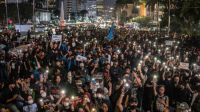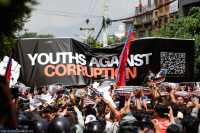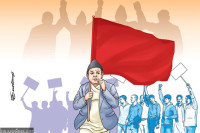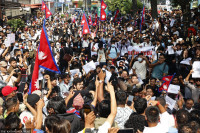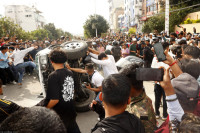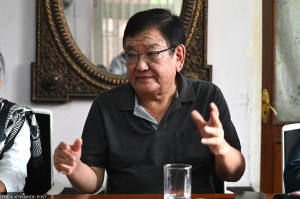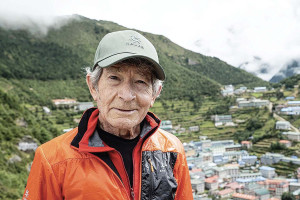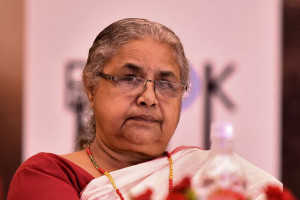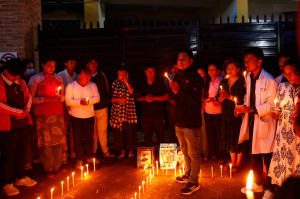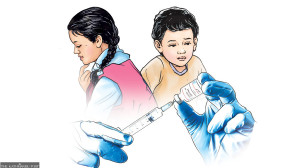Opinion
Friends in need
Teaching Hospital was able to function efficiently after the quake with the help of many others
Dr Deepak Prakash Mahara
It has been more than two weeks since the devastating earthquake hit Nepal. The disaster gave rise to many problems with regards to treating patients. The Tribhuvan University Teaching Hospital (TUTH)—one of the biggest hospitals in Kathmandu—worked very hard to efficiently treat victims suffering from several types of injuries. In doing so, the support and cooperation of different organisations, the hospital medical team, its staff, volunteers, and suppliers remained invaluable. By now, TUTH and other hospitals have already started running general out-patient department services and regular activities, though some post-quake challenges in relation to the health and rehabilitation of the victims remain. As hospitals alone cannot address the prevailing and upcoming problems on their own, there is a need for collective efforts among various stakeholders and well-planned initiations in the aftermath of the disaster. This article deals with the efforts made by TUTH for post-disaster management in collaboration with some organisations that provided much-needed help.
Major initiations
The Teaching Hospital had recently set up a ‘cold orthopedics ward’ for dischargeable patients. The main objective of this ward was to provide transitional shelter for victims after being discharged from the hospital. Some of the patients need regular follow-ups whereas others have nowhere else to go. Earthquake victims can then be gradually shifted to different camps run by social organisations and ultimately, back to their own localities.
Similarly, a TUTH Disaster Outreach Management Committee has been formed to organise outreach camps in heavily-affected districts. This committee includes senior doctors from different departments. In these camps, minor cases are treated on the spot and major cases are referred to various hospitals with proper initial diagnoses. The psycho-social component of trauma is also duly prioritised in the camps. Many patients with psychiatric problems have also been observed since the terrifying quake. The trauma has persisted in many, resulting in mental disorders of different sorts. To remedy this, the committee has successfully organised camps in Sindhu-palchowk, Gorkha, and Rasuwa.
TUTH has also coordinated with the Nepal Youth Foundation (NYF), an NGO, for transitional management of discharged and displaced patients to its Nutrition and Rehabilitation Home in Sunakoti, Lalitpur. This has eased the flow of patients. Most remarkably, the hospital has just initiated two pharmacies—regular and charitable—which are in separate buildings. The charitable pharmacy helps patients who need a relatively long treatment plan and those that need expensive treatment. Mostly, victims buried under rubble for a long time and those severely crushed need such special treatment.
Those who are marked as disaster victims will not need to renew their tickets for follow-up. Almost all victims coming to the hospital are made to sit for psychological counseling and psychiatric treatment (if necessary) for free. Medical students are requested to make patients and visitors aware about sanitation and epidemic prevention through posters, notices, and audio recording inside the hospital premises. There is also a plan to enhance physiotherapy services.
Even though the hospital has already closed its ‘Incidence Command Section’ and made selective out-patient departments effective, there is a need to remain prepared. So, TUTH has maintained a stock of medicines for epidemic control, even though that is not the primary responsibility of the hospital. The medicine stock can treat more than 500 patients in case of an epidemic. A Nepal Army team is also ready to make space in the open grounds and gardens of TUTH by using temporary tents.
The many who helped
In addition to support from the Ministry of Health and Population, many organisations helped the TUTH. They not only supported the hospital during the very first days after the disaster but have continued to manage affairs even afterwards. The Nepal Youth Foundation, for instance, provided huge quantities of medicines needed urgently and other logistical support to the hospital. It is still coordinating with the hospital to transport discharged victims to its rehabilitation shelter.
AMDA International has collaborated to run disaster management outreach camps. Satya Sai Center, Patanjali Yog Peeth, Nami International, and CWIN Nepal’s support have also been crucial. Likewise, Handicapped International has recently coordinated to provide wooden stands to needy victims. The International Organisation for Migration (IOM) Nepal has also started working in coordination with TUTH to provide temporary shelters. TUTH’s services have, thus, been the result of collective support.
Take care
Those currently residing outside their houses under tents should pay attention to sanitation and drinking water. Discharged patients and their caretakers should sincerely take heed of the advice of doctors in whatever condition they are. Let us all give priority to pregnant women, children, and the disabled with regards to providing shelter and nutritious foods. In case you are wounded and notice an infection, do not delay in seeking medical help, for quake-related injuries can cause other diseases and deformity. Try to distract your mind from the horrible scenes of the earthquake and your losses as much as possible. Be hopeful and lessen your stress by doing things you like. Do not forget to wear a medicated mask while among other people or when you are in an area with many decayed domestic animals.
You can contact the social service room or information desk of various hospitals if you have anyone missing, unwell, or in need of care after treatment. Victims of the disaster need not pay any money for their complete treatment in any health centres throughout Nepal. Many social organisations and helping hands are ready to help victims of the quake based on their immediate and long-term need.
Mahara is currently the Executive Director and a Professor at TUTH, Maharjgunj and Regmi is associated with the Nepal Youth Foundation




 22.12°C Kathmandu
22.12°C Kathmandu

